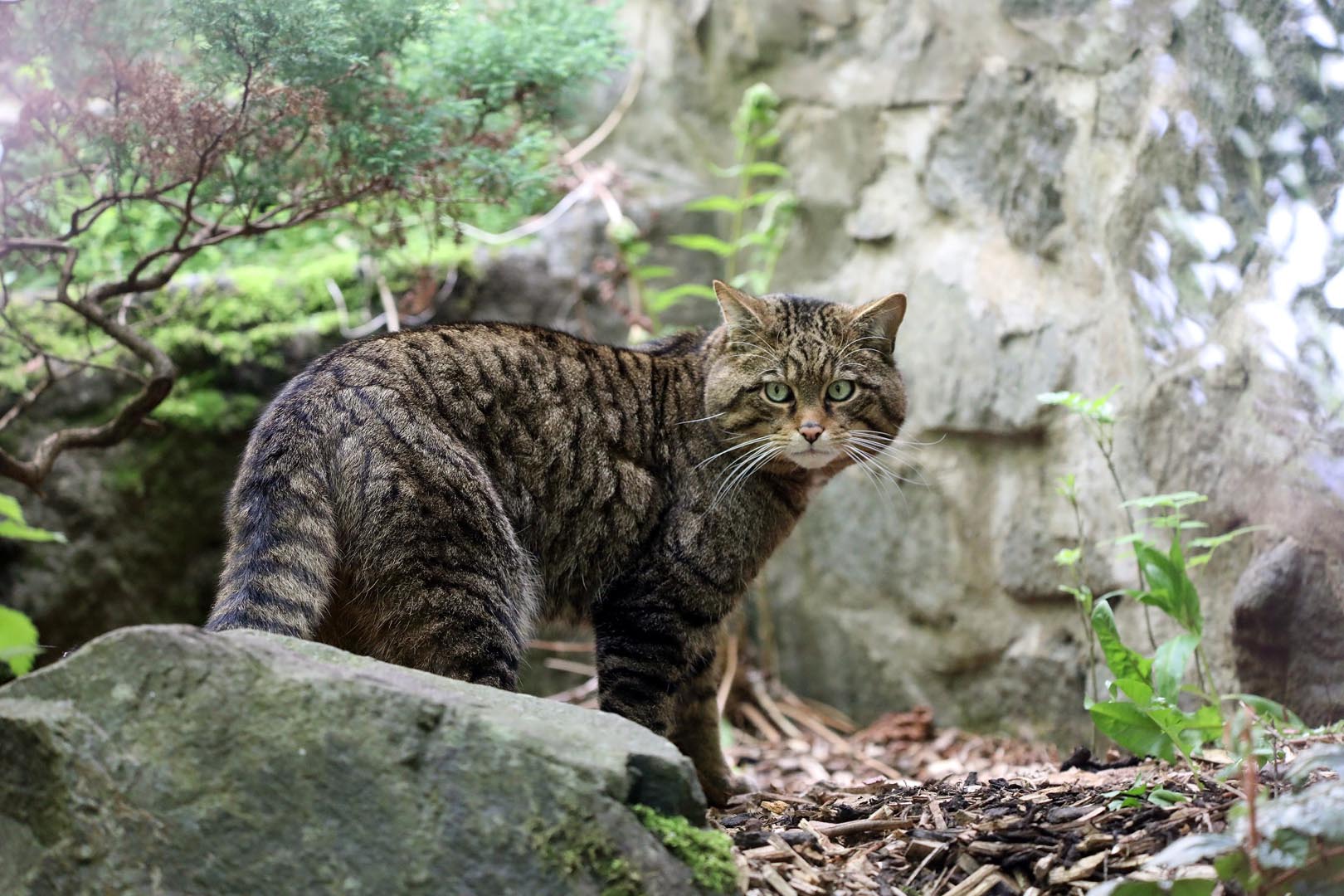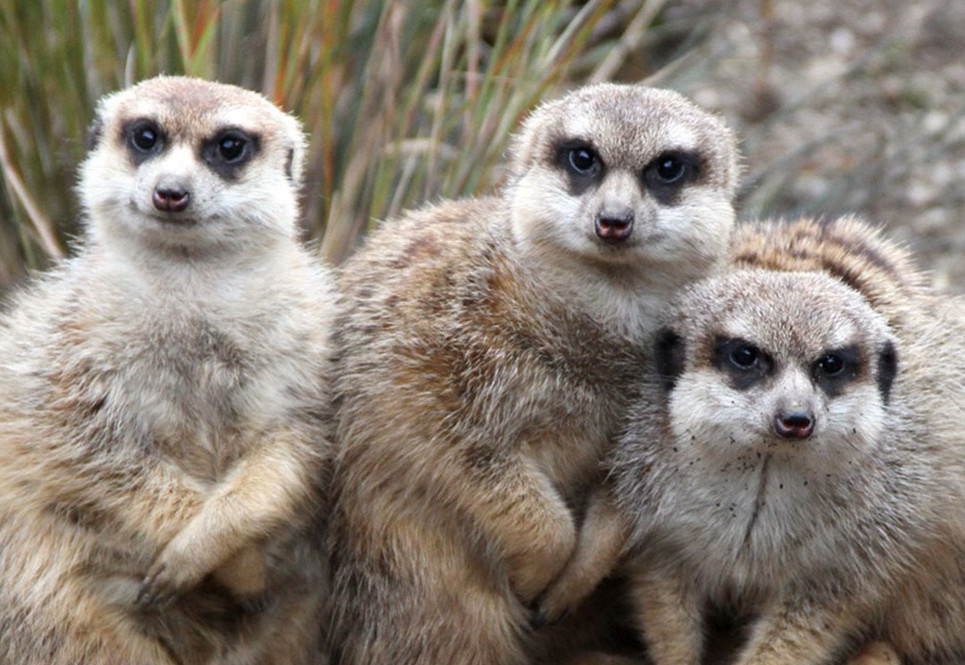Wildcat
Felis silvestris

We currently have two wildcats at the zoo, Rusky and Rhu. Rusky, a male wildcat, was born in 2020 at the zoo. Rhu, a female wildcat, arrived from Highland Wildlife Park in 2022.
Population
Unknown
Diet
Carnivore
Habitat
Forest
Fact file
Scotland's wildcats are a unique and highly threatened sub-population of the European wildcat, Felis silvestris silvestris
Although they may look similar to domestic (pet) cats, they do have some unique features, including their blunt and bushy tails and their genetic make-up! It can be very difficult to tell the difference between a wildcat, a domestic tabby, or a hybrid from looks alone
Thanks to their un-broken striped coats, wildcats have earned the nickname 'Highland tigers'
As meat-eaters, they spend long hours sleeping and digesting their food during the day, and are most active around dawn and dusk

Saving Wildcats
Sadly, Scotland’s wildcats are on the brink of extinction after hundreds of years of persecution and habitat loss, followed by breeding with domestic cats (known as hybridisation). Now critically endangered in Britain, there are barely a handful left and scientific research has confirmed the species will not survive without help.
The last hope for this iconic species is the Saving Wildcats partnership project, which RZSS is leading in collaboration with NatureScot, Forestry and Land Scotland, Cairngorms National Park Authority, Nordens Ark and Junta de Andalucía.
Based at Highland Wildlife Park and building on the work of Scottish Wildcat Action (2015-2020), the project brings together national and international expertise to prevent the extinction of wildcats in Britain by breeding and releasing them into the wild.
Find out more about Saving Wildcats
